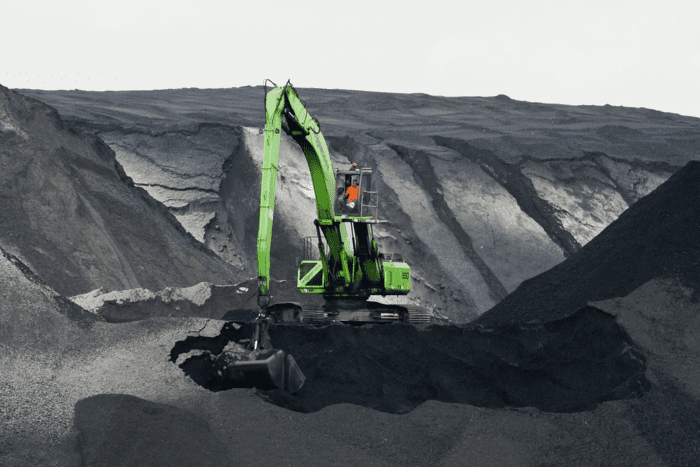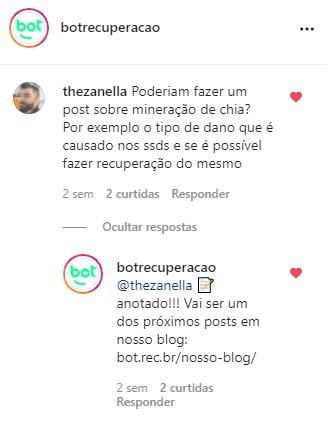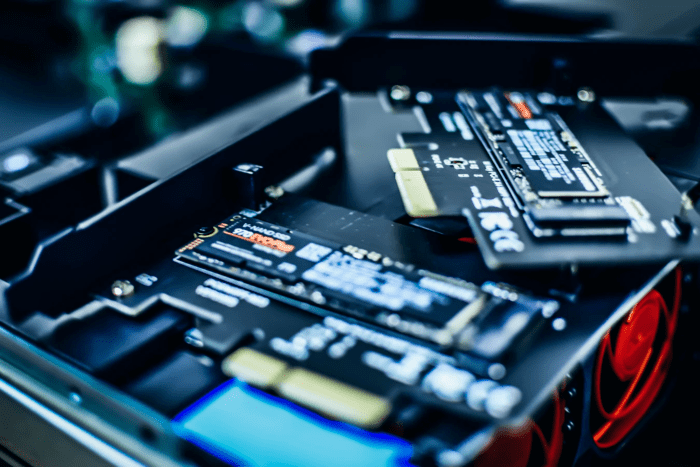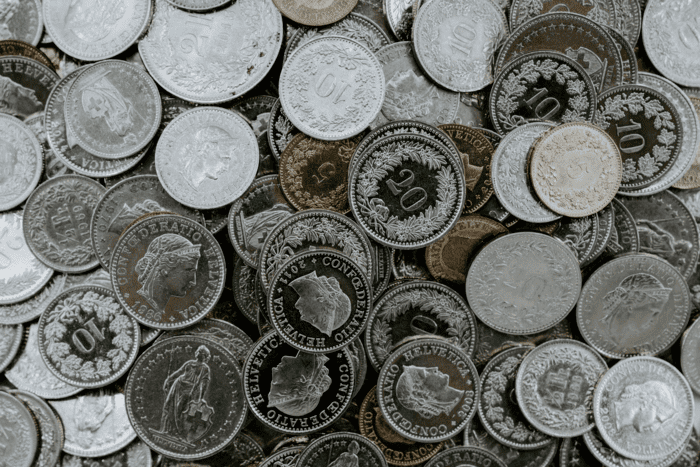Chia mining is on the rise, but the procedure requires a lot of care to avoid problems with your hardware.
Have you ever heard of Chia mining? This is a recent cryptocurrency that has been much talked about in this universe for just over 11 years, but it already moves more than a trillion dollars – literally.
Bitcoin is the best-known cryptocurrency, as it was the pioneer in this world. It was created in 2009 by Satoshi Nakamoto, a pseudonym whose identity has not yet been revealed. Since then, thousands of other cryptocurrencies have been created – according to Investopedia, there were more than 4,000 in January 2021!

In fact, a list by the website Analytics Insig, drawn up on June 8, 2021, showed the 10 cryptocurrencies with the highest market capitalization. Together, they represent no less than US$1.2 trillion, an amount greater than Mexico’s GDP!
Chia is a cryptocurrency that was launched in 2017 and works differently from most cryptocurrencies, allowing people with ordinary computers to mine (or, as Chia calls it, “grow”) their coins.
The big issue is that this can damage the SSD used for cultivation, especially when used improperly. As a result, the losses can be great, while the gains can be slow in coming.
This content was inspired by a comment on Bot’s Instagram by Thiago Zanella (@thezanella).

We would even like to invite you to follow us on social media and leave your questions there – they may be covered in our next content!
First of all, we would like to refer you to an article on the Tom’s Hardware website, which has been of great value in the development of our content.
Read on to find out more about this more sustainable cryptocurrency, how it works and how SSDs can be damaged.
What is Chia cryptocurrency?

Chia is a cryptocurrency that was launched in 2017 by Bram Cohen, creator of the famous BitTorrent. It also counts other big names among its executives, such as Gene Hoffman (founder and former CEO of eMusic.com and Vindicia) and Mitch Edwards (former CEO of Overstock.com).
Chia Network has built a blockchain (a kind of database in which cryptocurrency trades are recorded) which, according to the company, is a better, smarter, decentralized, efficient and secure transaction platform.
Chia’s focus has been on having a more sustainable cryptocurrency, with fewer environmental implications than the mining processes of other currencies, which use a significant amount of electricity.
Chia mining, called “farming” by the company itself, which gives the cryptocurrency an even more sustainable look, works through a process that requires much less electricity, which is a bit complex, but we will try to summarize it here.
Basically, cryptocurrencies such as Bitcoin and Ethereum use a process called “Proofs of Work”, a system that requires efforts to prevent misuse of computing resources. When on a large scale, energy consumption is enormous.
Chia, on the other hand, uses another process: “Proofs of Space and Time”, a cryptographic technique in which providers show that they are allocating unused space on their hard disks as storage space for a certain period.
In other words, Chia is a cryptocurrency whose cultivation requires less electricity than the mining of other cryptocurrencies, which makes it a more sustainable and economical option.
Another fundamental difference with other cryptocurrencies and mining platforms is that Chia does not pay for users to allocate powerful video cards to carry out complex calculations, but rather for them to create large digital files and leave them stored on their hard drives.
In addition, Bram Cohen told CNN Business that Chia is designed to be accessible. “We designed our software with the intention of being usable by anyone who can use the internet,” said Cohen.
Chia’s proposal has been well received in the market. According to Bloomberg, Chia Network Inc., the company responsible for Chia, was valued at around $500 million in a funding round.
In fact, Chia has renowned investors such as Breyer Capital, Collab+Currency, Cygni Capital, DHVC, Naval Ravikant, Slow Ventures and True Ventures.
How to mine chia?

The “cultivation” of Chia is relatively simple. The Chia Network has its own blockchain transaction platform called “Mainnet”, which can be “downloaded” from the Chia website. So all you have to do is install the program and set aside an amount of space on your storage disk for the network.
Unlike Bitcoin miners, for example, Chia doesn’t require dedicated hardware: you can leave the program running while you work or use your device to play games or have fun, for example.
This makes Chia an accessible cryptocurrency. Cohen said that many people have some unused space on their storage disks, which could be allocated to growing Chia.
The process is very similar to planting, in an analogy that was deliberate on the part of the Chia Network. Basically, the steps are as follows:
-
Clear the field
First, you need to delete unused files on your storage devices to free up space for growing.
-
Plowing and sowing the field.
Next, it is time for the process of creating files that will later be collected as part of the cultivation, which is called “plotting”. “Plot” in this case can be translated as “land”.
-
Picking
Once the files have been “planted”, the user needs to wait for the “seedlings” to grow, which can take a long time.
How to earn Chia cryptocurrency?

The probability of winning a Chia block is equivalent to the percentage of total space that each user (called a “farmer”) has compared to the entire network.
According to the Chia Explorer website, on June 10, 2021, the date this content was created, the total space dedicated to the Chia network, called “netspace”, is 21,093 EiB (Exbibytes). To understand this better, 1 EiB is equivalent to the following:
- 024 PIB (Pebibytes)
- 152,92 PB (Petabytes)
- 049e+6 TiB (Tebibytes)
- 153e+6 TB (Terabytes)
- 074e+9 GiB (Gibibytes)
- 153e+9 GB (Gigabytes)
It is a little difficult to understand these figures, but the conclusion is that there is already a huge amount of netspace on the Chia network, which should continue to grow over time.
Simply put, each Chia plot is equivalent to something like a Bingo card, only more complex. Each time a block challenge surfs, the Chia network determines a winner based on a series of rules.
If your land matches these rules and “wins” the block, you receive the reward, which is currently 2 XCH (short for Chia currency).
According to the official Chia FAQ, after Chia’s pre-cultivation, the rewards were set at 64 blocks every 10 minutes. Over the first 12 years, the rewards will be halved at the end of every 3rd year.
From year 13 onwards, the rewards will be constant: 4 Chia every 10 minutes.
Currently, there are 32 blocks every 10 minutes, which equates to approximately 4,608 blocks per day or 1 block every 18.75 seconds.
As the chances of winning a Chia block are equivalent to the amount of netspace available to each farmer, the more storage space you dedicate, the greater your chances of winning.
You can calculate the odds manually, but the most practical thing is to look for a Chia calculator. On the day this content was created (10/06/2021), the odds were as follows for the respective number of plots:
- 1 plot: more than 132 years
- 10 plots: more than 13 years
- 50 plots: more than 2 years
- 100 plots: more than 1 year
- 200 plots: 8 months
- 300 plots: 5 months
- 400 plots: 4 months
- 500 plots: 3 months
- 750 plots: 2 months
- 2000 plots: approximately 1 month
It sounds simple, and in fact it is not that complex. However, each file is around 101.4 GiB (or 108.87742 GB), meaning that the demand for storage space is huge.
In other words, if you have 10 TB available, it should take more than a year to earn the reward for a block of Chia, equivalent to 2 XCH.
According to the price on 06/09/2021 on CoinMarketCap, 1 XCH opened the day worth US$ 553.33 (or R$ 2,786.67). Therefore, 2 XCH would be equivalent to US$ 1,106.66 (or R$ 5,573.34).
Also, remember that the periods above are only estimates. We can draw a parallel with lottery tickets: buying more tickets increases the probability of winning, but victory can come to those who only have one ticket – or, in this case, one plot.
What is the relationship between chia mining and storage disks?

As we said, the size of each file exceeds 100 GB. However, what counts is not just the space itself, but the characteristics of the storage disks used.
According to Tom’s Hardware, using an Intel® Optane™ 905P series SSD, which is very fast, each Chia k=32 plot takes around 6 to 7 hours.
It is possible to plot with a conventional disk, but it should take twice as long, and it is not possible to plot several plots simultaneously, unlike with SSDs: with the ideal configuration, you can make several plots simultaneously.
Once the plots are complete, the files can be transferred to a conventional disk. This takes advantage of the greater processing power of SSDs and the lower storage cost of disks, optimizing your costs.
However, the issue here is not just the final size of the files, but also temporary storage.
Supposedly, each 101.4 GiB plot requires up to 350 GiB (375.81 GB) of temporary storage – although the guys at Tom’s Hardware have managed, with a single plot at a time, to use 260 GiB (just under 280 GB) SSDs.
According to their tests, for fast SSDs, the limiting factor is storage capacity. With a 2 TB SSD (1,863 TiB), they were able to plot up to 6 plots simultaneously. For more than that, you need either a larger SSD or more SSDs.
Each plot also needs 4GB of memory and two cores in the computer’s CPU. Multiple plots therefore require a more powerful computer.
The big issue is that not all SSDs are suitable for growing Chia. Home-use SSDs, in particular, are contraindicated, as their durability tends to be very short.
Bram Cohen made a thread on Twitter explaining the issue better. If you want to follow along, see below:
(Tweet link: https://twitter.com/bramcohen/status/1393988621921701889 )
Algumas das principais informações que partilhou são as seguintes
- Plotting with an old disk or an enterprise-class SSD won’t cause any problems for the device.
- Mining Chia with disk, even with the same disk that the plots will be on, is a little slower (not much more than twice as long), but it works well.
- Don’t plot with SSDs for traditional use, or at least plot only a little with each SSD of this type.
Cohen also made an interesting parallel in his last tweet. Check it out:
(Link: https://twitter.com/bramcohen/status/1393991791590838277 )
In translation, he said the following:
“Also don’t clean non-stick pans with steel wool, don’t wash vegetables with soap and don’t use your phone as a doorstop. These are not arguments against steel wool, soap or phones, they are basic instructions on using your tools properly.”
According to the mydrivers website, a 512GB SSD is only supposed to last 40 days before it reaches its TBW (Terabytes Written) limit. A 1TB SSD, on the other hand, would only last 80 days.
The information was shared by reliable outlets such as NotebookCheck, which attests to its credibility.
Basically, TBW refers to the total amount of recorded data that the SSD can hold in its lifetime. When this value is reached, the device may stop working and thus have to be replaced.
Chia mining is therefore an alternative way of making money (although not always in the short term, as we saw earlier). However, mining Chia with an SSD can permanently damage the storage disk.
Is it possible to recover an SSD damaged by Chia mining?

No. Once the device has reached its TBW, it is very difficult to recover it, as recovery is much more difficult than with damaged disks, for example.
It may seem strange to think of an SSD losing its usefulness due to overuse. However, mining Chia is a much more intense use than the average user would put an SSD through.
For example, the technical data sheet for the SanDisk Ultra® 3D SSD shows the following durability data for devices according to their capacity:
- 250 GB: 100 TBW
- 500 GB: 200 TBW
- 1 TB: 400 TBW
- 2 TB: 500 TBW
- 4 TB: 600 TBW
In its lowest capacity version (250GB), the brand guarantees that the device can withstand up to 100TB of writing until it runs into problems. This is a huge volume of data, difficult for the average user to reach.
So if you want to do Chia mining, take into account the lifespan of the SSD so you can plan for the durability of your virtual farming equipment.
It should be noted, therefore, that the SSDs and disks used for Chia mining are not intended for storing files, but for growing them for later transfer to a disk. That’s why, more often than not, not many personal files are lost.
Read also: How to recover a corrupted disk and what can corrupt a disk?
Growing Chia cryptocurrency: if you want to do it, plan your infrastructure!
Chia is on the rise among cryptocurrencies, with its company having been valued at around $500 million, which is no small feat in a universe with thousands of different cryptocurrencies, as we saw at the beginning of this article.
Those who ride the wave early on have a chance of making more money, as the rewards for each block decrease over time. So if you want to join this more sustainable and less costly opportunity than mining Bitcoin, Ethereum and other currencies, now is the time.
Unfortunately, SSDs used to mine Chia and which have already exceeded their TBW can rarely be recovered or repaired for later common use. However, for any other situation, count on Bot for data recovery and have the best services at your disposal!


